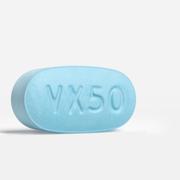Wikipedia (en)
Fentanyl, also spelled fentanil, is a highly potent synthetic opioid primarily used as an analgesic. Since 2018, fentanyl and its analogues have been responsible for most drug overdose deaths in the United States, causing over 71,238 deaths in 2021. Because fentanyl is 50 to 100 times more potent than morphine, its primary clinical utility is in pain management for cancer patients and those recovering from painful surgical operations. Fentanyl is also used as a sedative. Depending on the method of delivery, fentanyl can be very fast acting and ingesting a relatively small quantity can cause overdose.
Fentanyl works by activating mu-opioid receptors.
Fentanyl is also commonly known as fentanyl citrate, Sublimaze, Actiq, Duragesic, Fentora, and Matrifen.Pharmaceutical fentanyl's adverse effects resemble those of other narcotic opioids, including euphoria, confusion, respiratory depression (which, if extensive and untreated, may lead to arrest), drowsiness, nausea, visual disturbances, dyskinesia, hallucinations, delirium, a subset of the latter known as "narcotic delirium," analgesia, narcotic ileus, muscle rigidity, constipation, addiction, loss of consciousness, hypotension, coma, and even death. Alcohol and other drugs (i.e., cocaine, heroin) can synergistically exacerbate fentanyl's side effects. Naloxone (also known as NARCAN) can reverse the effects of an opioid overdose; however, because fentanyl is so potent, multiple doses might be necessary.Fentanyl was first synthesized by Paul Janssen in 1959 and was approved for medical use in the United States in 1968. In 2015, 1,600 kilograms (3,500 pounds) were used in healthcare globally. As of 2017, fentanyl was the most widely used synthetic opioid in medicine; in 2019, it was the 278th most commonly prescribed medication in the United States, with more than a million prescriptions. It is on the World Health Organization's List of Essential Medicines.Fentanyl continues to fuel an epidemic of synthetic opioid drug overdose deaths in the United States. While prescription opioid deaths remained stable from 2011 to 2021, synthetic opioid deaths increased from 2,600 overdose deaths per year to 76,238 per year. Fentanyl constitutes the majority of all drug overdose deaths in the United States since it overtook heroin in 2018. The United States National Forensic Laboratory estimates fentanyl reports by federal, state, and local forensic laboratories increased from 4,697 reports in 2014 to 117,045 reports in 2020. Fentanyl is often mixed, cut, or ingested alongside other drugs, including cocaine and heroin. Fentanyl has been reported in pill form, including pills mimicking pharmaceutical drugs such as oxycodone. Mixing with other drugs or disguising as a pharmaceutical makes it difficult to determine the correct treatment in the case of an overdose, resulting in more deaths. Fentanyl's ease of manufacture and high potency makes it easier to produce and smuggle, resulting in fentanyl replacing other abused narcotics and becoming more widely used.




